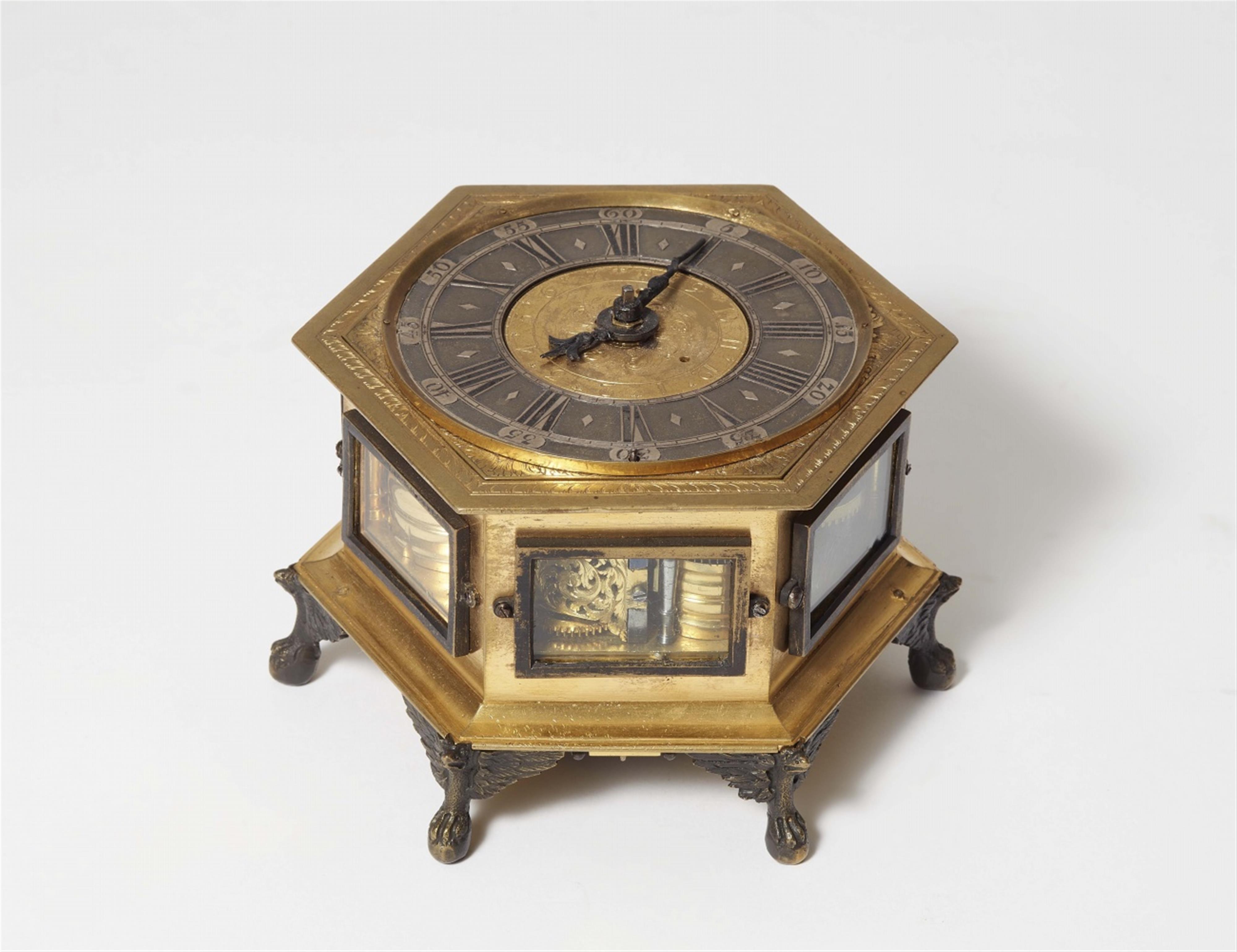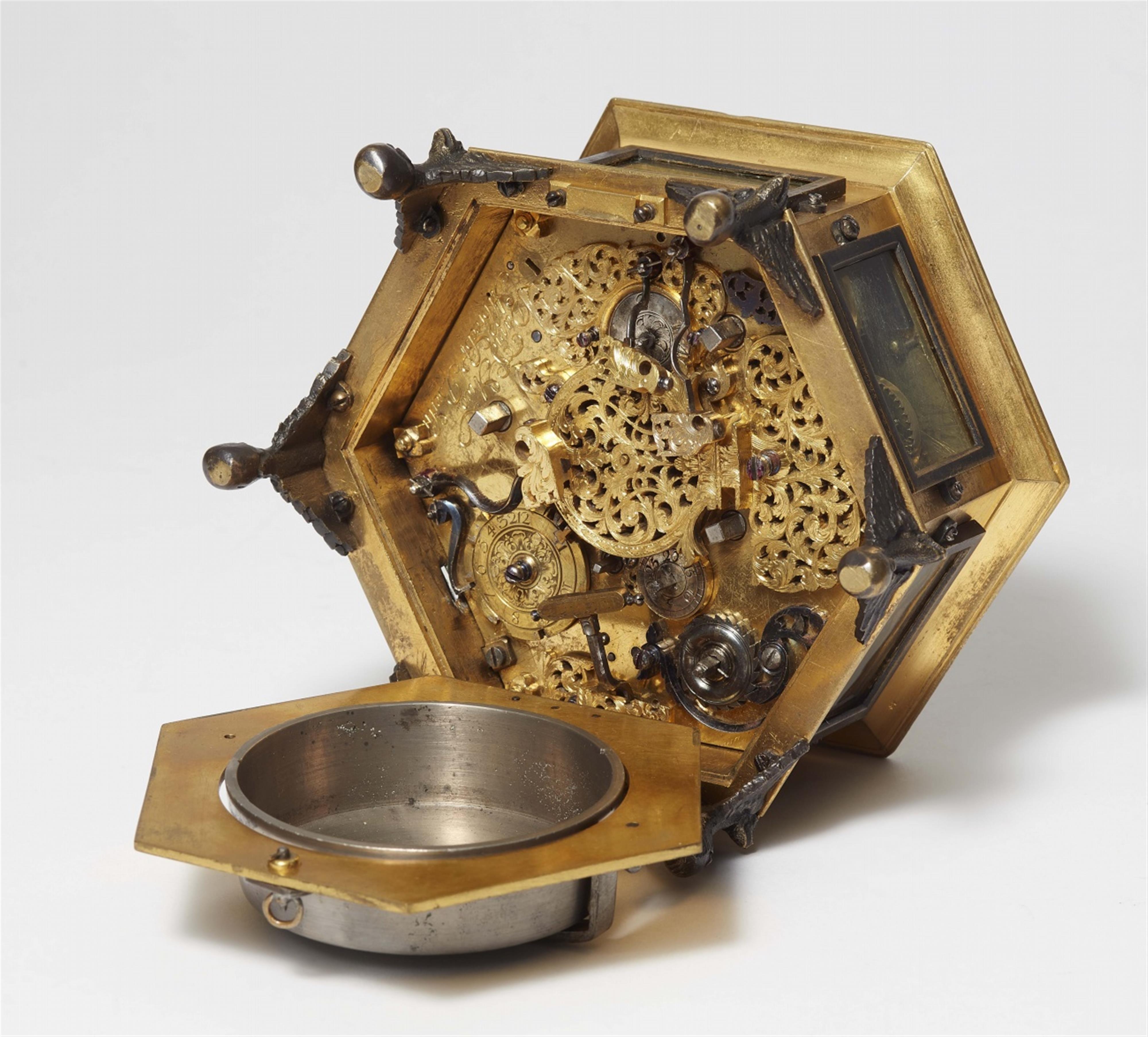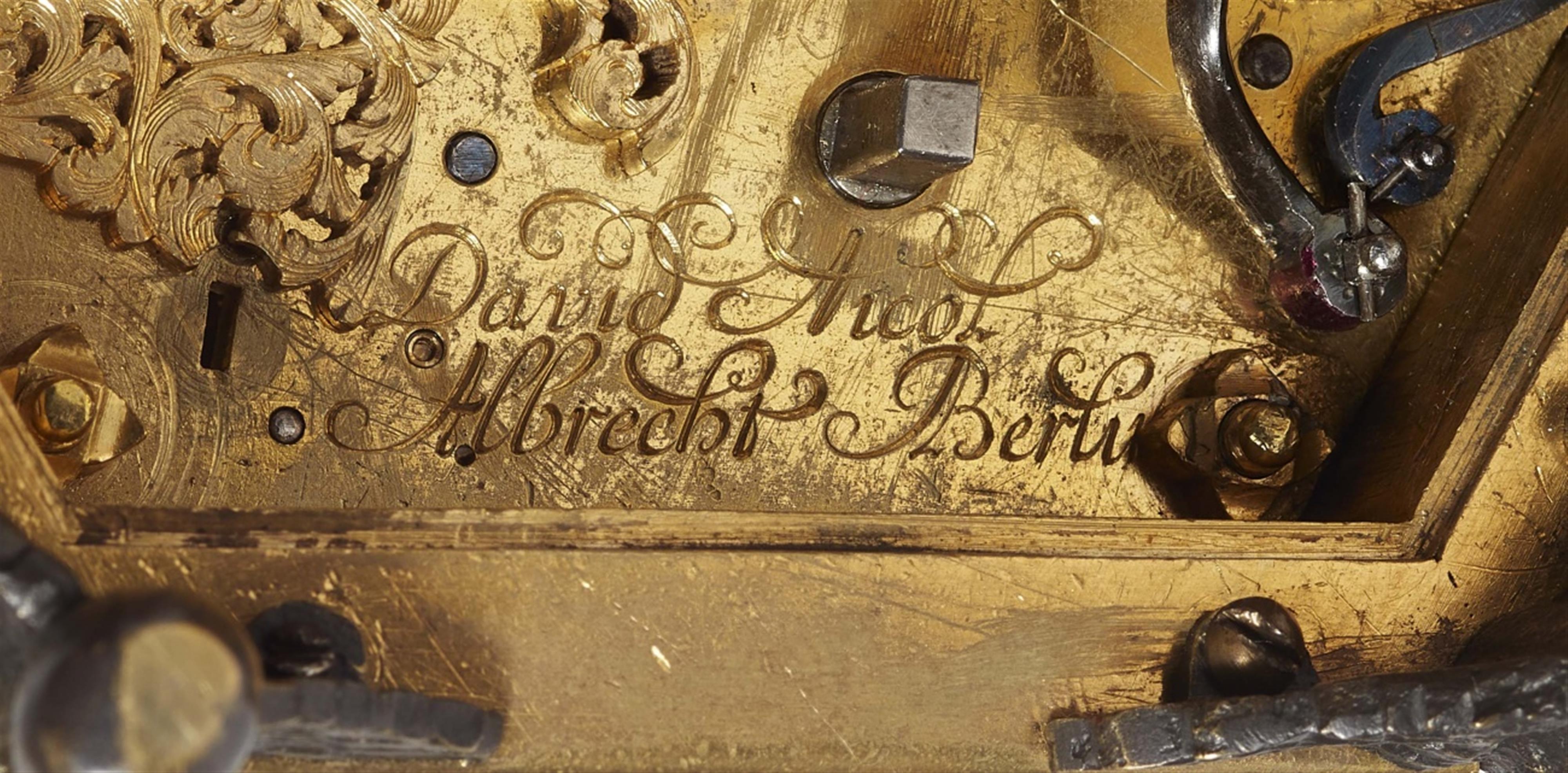A rare octagonal bronze table clock
Gilt and burnished bronze, iron, steel, and silver-plated copper. Pedestal clock with glazed windows resting on harpy feet. Horizontal dial with Arabic and Roman numerals on a bronze relief ring. The central alarm dial with an acanthus rosette and black hands in a copper surround. Fire-gilt chain and fusee movement, verge escapement with pierced floral mechanism, alarm function, locking plate striking mechanism, hourly striking with one hammer and quarter-hourly striking with two hammers on a bell in the base, the hammer heads of pierced floral design. Engraved on the plate “David Nicol Albrecht Berlin”. The hands, hinges and bell presumably replaced. H 9.7, D 15 cm.
Berlin, David Nicolaus Albrecht, 1680 - 1720, with minor amendments.
Provenance
"Prof. Hans-Siegfried und Jutta Schuster, Cologne; former collection of Johannes Lehmann, Leipzig.
Auctioned by Lempertz Cologne, auction 919 on 16th May 2008, lot 757."
Literature
A similar Berlin table clock by Martin Krüger published in Maurice, Die deutsche Räderuhr, vol. II, Munich 1976, no. 623. A second, almost identical, table clock is housed in the Stadtmuseum Berlin, inv. no. VI 18480, described as follows in the online catalogue: “Albrecht is mentioned in Berlin's citizen's book on 25.10.1736 with the following entry: "David Albrecht has been a court clockmaker for over 30 years, deals daily with the repair and upkeep of clocks at court, is on the court budget, and works for no one in the city, so would be spared citizenship". Albrecht was appointed court clockmaker in Berlin in 1695, and thus had privileges and a good income that allowed him not to accept any more commissions from the city. He himself claimed in a letter to Elector Friedrich III of Brandenburg in 1695 that he had been working as a small clockmaker in Berlin for 15 years, i.e. since 1680. He lived not far from the palace at Königstraße 13. Various clocks by him are mentioned in specialist literature, such as another hexagonal table clock that has the same harpy feet as the one presented here. Gold pocket watches set with enamel and diamonds are also mentioned in the inventory of Queen Sophie Dorothea of Prussia. She gave one of these pocket watches to her daughter, Queen Ulrike of Sweden, in 1742. It can be assumed that Albrecht remained active until about 1740.” (translated from German).






